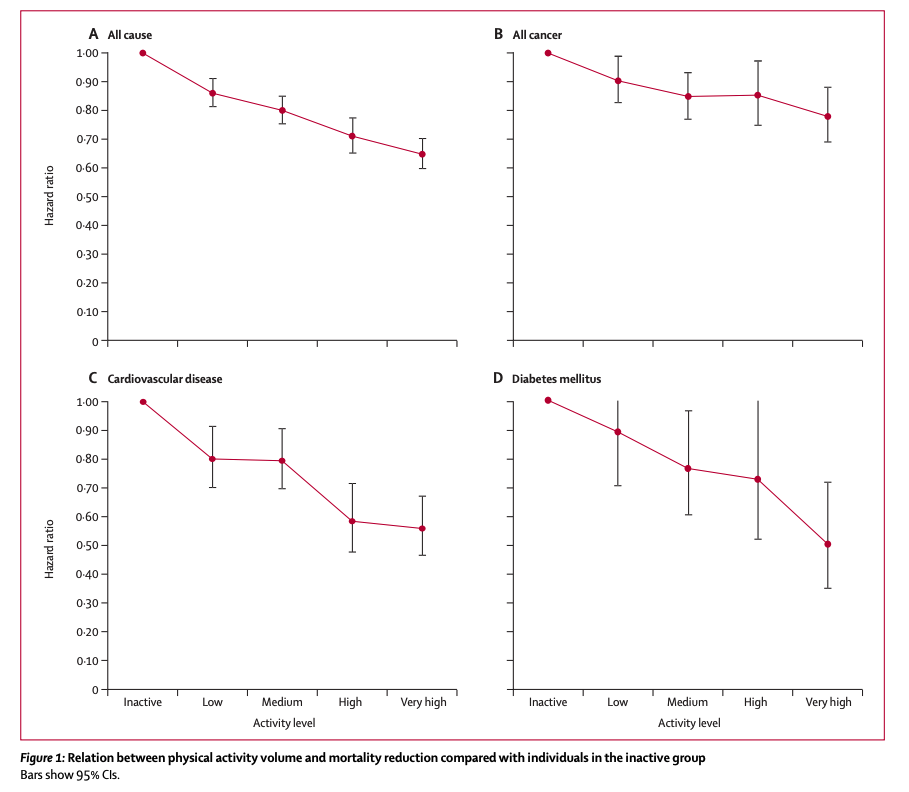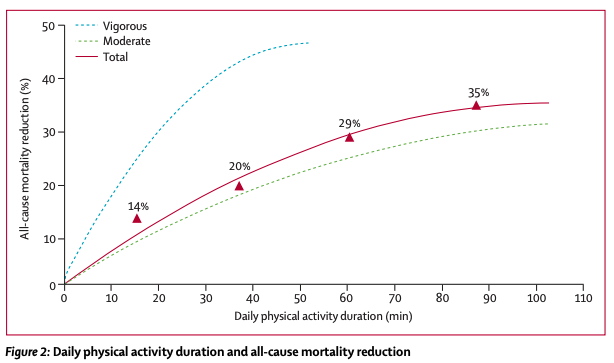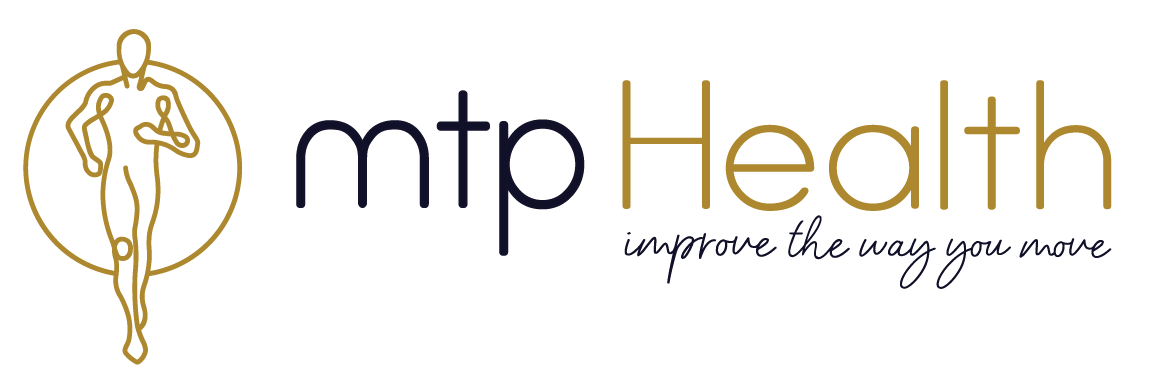Research Review (Opinion): Minimum Amount of Physical Activity for Reduced Mortality & Extended Life Expectancy
Paper Reviewed: “Minimum Amount of Physical Activity for Reduced Mortality and Extended Life Expectancy: a Prospective Cohort Study” – Wen et al 2011
Question: Can even modest exercise produce health benefits??
The benefits of exercise are well researched and documented. Improvements are seen in strength, body composition and general well-being. The term “exercise is medicine” is often thrown around within an Exercise Physiology clinic because it has been shown that certain exercise such as aerobic and resistance training can provide similar benefits to that of drugs used to treat conditions such as diabetes, obesity and hypertension. Typically, in order to achieve optimal health benefits, 150 minutes of moderate physical activity per week is recommended (e.g. 30 minutes a day for 5 days).
But what if you could increase your life expectancy as a result of doing less than the recommended dosage regular exercise?
Here’s where things start to get interesting. The study by Wen et al., 2011 explored whether lower amounts of leisure-time physical activity could also reduce the risk of death and extend life expectancy.
What did the researchers do?
Aim: Wen et al (2011) aimed to assess the health benefits of different volumes of physical activity with a particular focus on whether less than 150 min a week of exercise was sufficient to reduce mortality or extend life expectancy
Participants: Taiwanese adults aged 20 years or older (416 175 individuals [199 265 men and 216 910 women]
Methods: Medical screenings were undertaken between 1996 and 2008. Medical history and lifestyle screening was conducted using a self-administered questionnaire. There were 3 questions which individuals were asked:
- 1) Types and intensities of weekly physical activity that they did during the previous month
- 2) Duration per week spent on various activities within the previous month
- 3) Amount of physical activity done at work.
Once the researchers gathered all the data from the questionnaires, they placed subjects into one of five categories of exercise volumes and “…calculated hazard ratios (HR) for mortality risks for every group compared with the inactive group, and calculated life expectancy for every group”.
- = inactive
- = low
- = medium
- = high
- = very high activity
RESULTS
Individuals in the inactive group had a 17% increased mortality risk compared to the low-volume activity group. The low activity group who exercised for an average of 92 min per week benefited from a 14% reduction in all-cause mortality and could expect a three-year improvement in life expectancy. These benefits continued to increase with higher levels of activity. This study, therefore, found a dose-response gradient of all-cause mortality (i.e. increased levels of physical activity = decreased risk of death) (see graph below).

The following graph shows that as little as 15 min/day of exercise can reduce the all-cause mortality by 15%, and “…every additional 15 minutes of exercise (up to 100 min/day) could lead to an additional reduction of 4% all-cause and 1% all-cancer mortality.”

WHAT DOES THIS MEAN FOR YOU?
Quite simply, this study shows that if you want to reduce the risk of all-cause (cardiovascular, cancer and diabetes mellitus) mortality and increase life expectancy, low volume exercise (as little as 15 min/day) can contribute BUT the greatest benefit is seen when performing higher intensity (e.g. vigorous) exercise. Additionally, performing longer duration (e.g. up to 100 min/day) exercise is beneficial.
Limitations: It is important to understand that this study is an observational study, not a randomized controlled trial, systematic review or meta-analysis (highest levels of scientific evidence), so results must be taken with caution.
Relevance to Practice
When it comes to getting in our exercise, the key message that we always want to relay to our clients is that some is always better than none. Better still, more exercise is typically better than less (up to 100 minutes and up to a certain intensity as suggested by this paper).
Yet information alone isn’t always empowering…
The need to consciously seek movement is a relatively modern phenomenon and the idea of exercise as it is commonly conceived (in gyms, running etc) doesn’t appeal to everyone. However, keeping in mind that physical activity can come in many forms, it is important to recognise the opportunity to explore the amazing range of movement on offer. This could be something as simple as going for a walk in nature or it could be something more intense, like learning to dance or getting involved in a sport. The point of ‘lifestyle’ movement, as opposed to exercise, is that we enjoy it. Once we enjoy it, it no longer becomes something that we ‘have to do’, instead becoming something we want to do. It becomes the very thing we live for, not just something that keeps us alive. To find out how to make this form of ‘exercise’ attainable for the long term, check out our article on motivation.
The key to making it work is to start small while pursuing your natural inclination & curiosity when it comes to exploring movement. We will be here to support you every step of the way.
“That’s why we make an effort to show people the facts, as well as giving them the tools.”
TAKE HOME-MESSAGE
Any movement has the potential to improve your health outcomes, even as little as 15 min/day or 90 min/week.
Reference: Wen, C. P et al., (2011). Minimum amount of physical activity for reduced mortality and extended life expectancy: A prospective cohort study. The Lancet, 378(9798), 1244-1253. doi:10.1016/S0140-6736(11)60749-6
